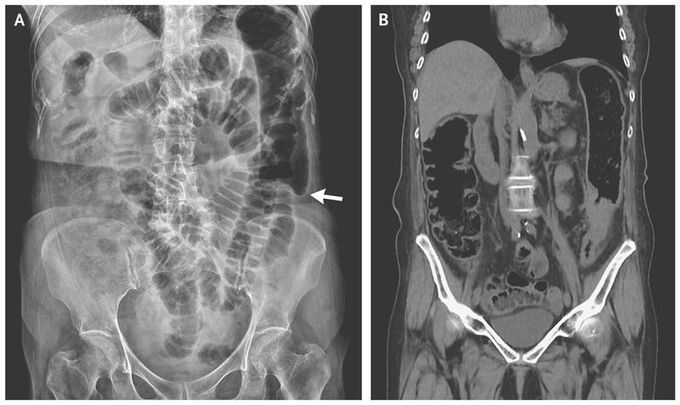


Colon Cutoff Sign
A 74-year-old woman presented to the emergency department with a 3-day history of lower abdominal pain, nausea, and vomiting. She had been unable to pass any stool for 1 week and reported having had small-caliber stool during the previous 6 months. On physical examination, bowel sounds were reduced, and the patient had periumbilical tenderness. Laboratory studies revealed normocytic anemia with a hemoglobin level of 9.6 g per deciliter (reference range, 12.3 to 15.3). A plain-film radiograph of the abdomen showed marked dilatation of bowel loops and abrupt termination of gas within the descending colon, referred to as a colon cutoff sign (Panel A, arrow). Computed tomography of the abdomen revealed segmental wall thickening of the descending colon (Panel B). Colonoscopy revealed a circumferential ulcerative lesion in the descending colon, and the results of pathological testing were consistent with adenocarcinoma of the colon. In this patient, the colon cutoff sign was caused by mechanical narrowing due to colon cancer. The colon cutoff sign is classically described in association with acute pancreatitis, when inflammation causes spasm or narrowing at the splenic flexure. The patient underwent hemicolectomy on the left side and received adjuvant chemotherapy. At follow-up 4 months after surgery, she had no evidence of local disease recurrence or distant metastases.

